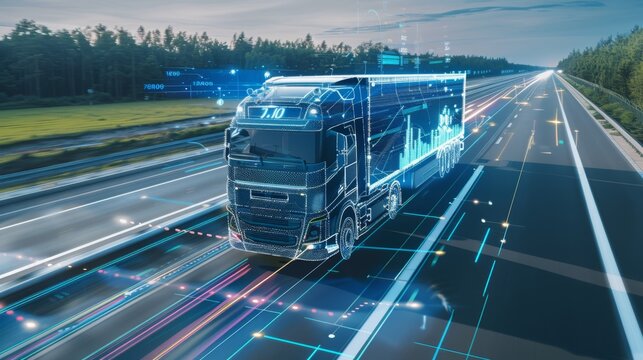The transportation industry is undergoing a paradigm shift with the rapid advancement of autonomous vehicle (AV) technology. What was once a futuristic concept is now becoming a reality, as self-driving cars, trucks, and buses are increasingly seen on the roads. By 2026, the widespread adoption of autonomous vehicles is expected to revolutionize how people and goods move, with far-reaching implications for safety, efficiency, and the economy. This article explores how autonomous vehicles are shaping the transportation industry in 2026, examining key areas such as technology developments, industry applications, benefits, challenges, and future outlook.

1. The Evolution of Autonomous Vehicle Technology
1.1 The Road to Full Autonomy
Autonomous vehicle technology has evolved significantly over the past decade. While early prototypes relied on basic sensors and software, modern AVs leverage advanced artificial intelligence (AI), machine learning, and complex sensor systems to navigate safely. In 2026, most autonomous vehicles on the market are classified as Level 4 or Level 5 in the SAE (Society of Automotive Engineers) autonomy scale. Level 4 vehicles are capable of full self-driving under specific conditions, while Level 5 vehicles can operate autonomously in all environments, requiring no human intervention.
Key technological advancements driving this evolution include:
- Enhanced Sensor Systems: Advanced LIDAR, radar, and camera systems provide a comprehensive 360-degree view of the vehicle’s surroundings, enabling precise object detection and navigation.
- Artificial Intelligence and Machine Learning: AI algorithms continuously learn from real-world data, improving the decision-making capabilities of autonomous systems.
- 5G Connectivity: High-speed 5G networks facilitate instant communication between vehicles (V2V) and infrastructure (V2I), reducing latency and enabling more efficient traffic management.
1.2 Role of Major Players in the Industry
By 2026, several tech giants and automotive manufacturers have established themselves as leaders in the AV market. Companies like Tesla, Waymo, GM’s Cruise, and Apple’s autonomous vehicle division have made significant strides, pushing the boundaries of what autonomous vehicles can achieve. Partnerships between technology firms and traditional automakers have accelerated innovation, combining expertise in software, AI, and vehicle manufacturing.
2. Impact on Personal Transportation
Top 5 Smart City Innovations Making Urban Living Easier in 2026
2.1 Redefining the Driving Experience
Autonomous vehicles are transforming the way individuals experience personal transportation. In 2026, self-driving cars are becoming a common sight, particularly in urban areas. For many, the concept of “driving” has shifted from active control to passive travel, where individuals can relax, work, or enjoy entertainment during their commute.
- Increased Comfort and Convenience: Autonomous vehicles eliminate the stress of driving in congested traffic, allowing passengers to use their travel time productively.
- Shared Mobility and Ride-Hailing Services: Companies like Uber and Lyft have integrated autonomous vehicles into their fleets, offering shared mobility solutions that are cost-effective and efficient. This shift reduces the need for car ownership, especially in densely populated cities.
2.2 Enhanced Accessibility
Autonomous vehicles have the potential to significantly improve mobility for individuals with disabilities and the elderly. In 2026, specially designed AVs will provide greater independence to people who previously faced barriers to transportation. Voice-activated controls, wheelchair accessibility, and other adaptive technologies have made autonomous vehicles a game-changer in inclusive transportation.
3. Transforming the Freight and Logistics Industry

3.1 Autonomous Trucks and Delivery Vehicles
The freight and logistics industry is one of the biggest beneficiaries of autonomous vehicle technology. By 2026, autonomous trucks will be increasingly used for long-haul transportation, reducing the reliance on human drivers and optimizing supply chain operations.
- Improved Efficiency: Autonomous trucks can operate continuously without the need for rest breaks, significantly reducing delivery times and costs.
- Enhanced Safety: With AI systems capable of analyzing road conditions and avoiding collisions, autonomous trucks promise to reduce accidents caused by human error.
- Environmental Benefits: Electric autonomous trucks are becoming popular, contributing to reduced carbon emissions and a more sustainable logistics industry.
3.2 Last-Mile Delivery
The last-mile delivery sector, which involves transporting goods from distribution centres to end consumers, is being revolutionized by autonomous delivery vehicles and drones. Companies like Amazon and FedEx are deploying self-driving vans and drones to handle deliveries efficiently, even in densely populated areas. This trend is expected to reduce delivery times and enhance customer satisfaction.
4. Implications for Public Transportation Systems
4.1 Autonomous Buses and Shuttles
Public transportation systems are also evolving, with the integration of autonomous buses and shuttles. In 2026, many cities have begun implementing self-driving buses in dedicated lanes, offering reliable and efficient transit options. Autonomous shuttles are also gaining popularity in airports, university campuses, and large business complexes.
- Reduced Operating Costs: Autonomous buses reduce labour costs associated with drivers and enable more flexible scheduling.
- Improved Safety: AV technology minimizes human errors, enhancing the safety of public transportation systems.
- Enhanced Accessibility: Autonomous shuttles are providing transportation services in underserved areas, improving mobility for residents who lack access to traditional public transit.
4.2 Urban Mobility and Traffic Management
The adoption of autonomous vehicles is reshaping urban mobility by reducing traffic congestion and improving traffic flow. In 2026, many cities have implemented smart traffic management systems that leverage real-time data from autonomous vehicles. These systems can dynamically adjust traffic signals and manage vehicle routing to optimize traffic conditions, reducing delays and emissions.
5. Challenges in the Widespread Adoption of Autonomous Vehicles
5.1 Regulatory and Legal Hurdles
Despite the technological advancements, there are significant regulatory challenges to the widespread adoption of autonomous vehicles. In 2026, governments are still grappling with creating comprehensive legal frameworks that address liability, safety standards, and data privacy concerns.
- Liability Issues: Determining fault in accidents involving autonomous vehicles remains a complex issue. Should the manufacturer, software developer, or vehicle owner be held accountable?
- Data Privacy Concerns: Autonomous vehicles collect vast amounts of data about passengers and their surroundings. Ensuring the privacy and security of this data is critical, as it can be vulnerable to hacking and misuse.
5.2 Public Perception and Trust
Building public trust in autonomous vehicle technology is another major hurdle. While the technology has proven its capabilities in controlled environments, many consumers remain sceptical about its safety and reliability. Incidents involving self-driving cars, even if rare, can significantly impact public confidence.
5.3 Technological Limitations
While autonomous vehicles have made remarkable progress, there are still technological limitations to address. For example:
- Adverse Weather Conditions: Heavy rain, snow, and fog can interfere with the sensors used by autonomous vehicles, affecting their ability to navigate safely.
- Complex Urban Environments: Maneuvering through complex urban settings with unpredictable pedestrian and cyclist behaviour remains a challenge for autonomous systems.
6. Economic and Environmental Impact

6.1 Job Displacement and Economic Shifts
The rise of autonomous vehicles is expected to disrupt the job market, particularly for professional drivers. In 2026, many trucking, taxi, and delivery driver jobs are being automated, leading to concerns about job displacement. However, this shift also creates new opportunities in fields like software development, data analysis, and vehicle maintenance.
6.2 Environmental Benefits
Autonomous vehicles are playing a key role in reducing the transportation industry’s carbon footprint. Many AVs are electric, and their efficient driving patterns contribute to lower fuel consumption. Furthermore, the use of autonomous vehicles in shared mobility services is reducing the number of cars on the road, contributing to decreased emissions and improved air quality.
7. The Future of Autonomous Vehicles Beyond 2026
7.1 The Path to Full Integration
While 2026 marks a significant milestone in the adoption of autonomous vehicles, the journey is far from complete. Full integration of AVs into all aspects of transportation is expected to take another decade or more, as the technology continues to mature and regulatory frameworks evolve.
7.2 Autonomous Vehicles and Smart Cities
The future of autonomous vehicles is closely tied to the development of smart cities. In the coming years, cities will increasingly leverage AV technology to create seamless, integrated transportation networks. This vision includes autonomous ride-sharing services, dynamic traffic management systems, and intelligent infrastructure that communicates with vehicles to optimize mobility.
7.3 New Business Models and Opportunities
The widespread adoption of autonomous vehicles is giving rise to new business models. For instance, companies are exploring subscription-based autonomous vehicle services, where users pay a monthly fee for access to a self-driving car whenever needed. Additionally, autonomous vehicle data is becoming a valuable asset, with companies using it to gain insights into traffic patterns, consumer preferences, and urban planning.
Decentralized Finance (DeFi): Trends and Predictions for 2026
As of 2026, autonomous vehicles are no longer a distant dream but a transformative force reshaping the transportation industry. From personal travel and public transportation to freight and logistics, the impact of AV technology is profound, offering unprecedented benefits in safety, efficiency, and sustainability. However, significant challenges remain, particularly in areas like regulation, public perception, and technology reliability. As the industry continues to innovate, the future of transportation promises to be increasingly autonomous, connected, and sustainable, heralding a new era of mobility.
Autonomous vehicles are not just shaping the transportation industry—they are redefining the very fabric of how we move and live. As we look to the future, embracing these changes will be key to building a smarter, more efficient, and inclusive transportation system.



